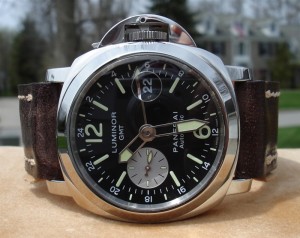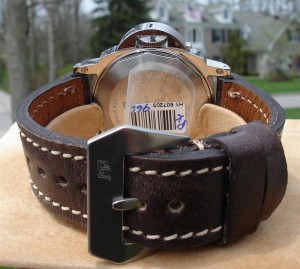It is obvious that not every replica watch with a water resistance rating is a diver’s fake watch. Watches that are not diver’s watches are actually regulated by a completely separate ISO, which is International Standard ISO 22810 Horology-Water Resistant Watches. The latest revision was such a source of pride to the Organization that it actually induced them to make a feeble pun. Though much online discussion of water resistance seems to focus on ISO 6425, ISO 22810 actually covers a rather greater range of watches and is arguably more relevant to the general consumer, than the specialist requirements of the dive watch ISO. 

There are some quite significant differences between the two ISOs. Because its scope is so broad, ISO 22810 defines no minimum standard for water resistance; instead, it presents testing criteria for the widest possible practical range for non-dive watches, and also makes it the manufacturer’s duty for stating “warranty conditions and precautions to be taken to ensure the quality of the watch over an extended period of time.” Rather than requiring any tests, it provides testing procedures, and it’s the manufacturer’s responsibility to define at the production stage “if he wishes to be able to guarantee that they satisfy the requirements of the International Standard.”
According to the Organization, the newly revised ISO is intended to ensure that if, for example, a fake watch has a 30 meters water resistance, the watch is then suitable for any and all “aquatic activities” of any kind, up to 30 meters’ depth – irrespective of the manufacturer. In practice this should mean that while your 50 meter water resistant watch isn’t a dive watch per se, that if you do dive with it to, say, 20 meters, it shouldn’t spring a leak – on the assumption that its date of manufacture is after the ISO went into effect, absolutely.
To begin with, there must be no condensation on the inside of the glass, per the condensation test, after the overpressure test. The immersion test is also less strict than for dive watches: 10cm depth, for a minimum of one hour. The thermal shock test is similar but not identical: 40ºC for five minutes, 20ºC for five minutes, and 40ºC for five minutes, to be followed by the condensation test. The five newton pressure-on-the-crown test is for five rather than ten minutes; there is no requirement for salt-water corrosion resistance, nor is there any for shock resistance, or resistance to magnetism. So clearly, a diver’s watch must be much tougher than a non-diver’s watch just based on requirements. If a manufacturer wishes that the replica watches can be tested using air overpressure rather than actual immersion, which avoids the risk of possible destructive damage to the tested watch.
From an owner’s point of view, probably the most significant difference is this: if you buy an ISO 6425 compliant diver’s watch, you know watch has been tested for overpressure resistance; you also know that the model is sample tested during production to ensure compliance with a host of other requirements. For “water resistant” watches, what’s more, no test frequency stipulations are made at all – this is left up to the manufacturer’s discretion and one assumes that sample testing would be the rule in such a case.